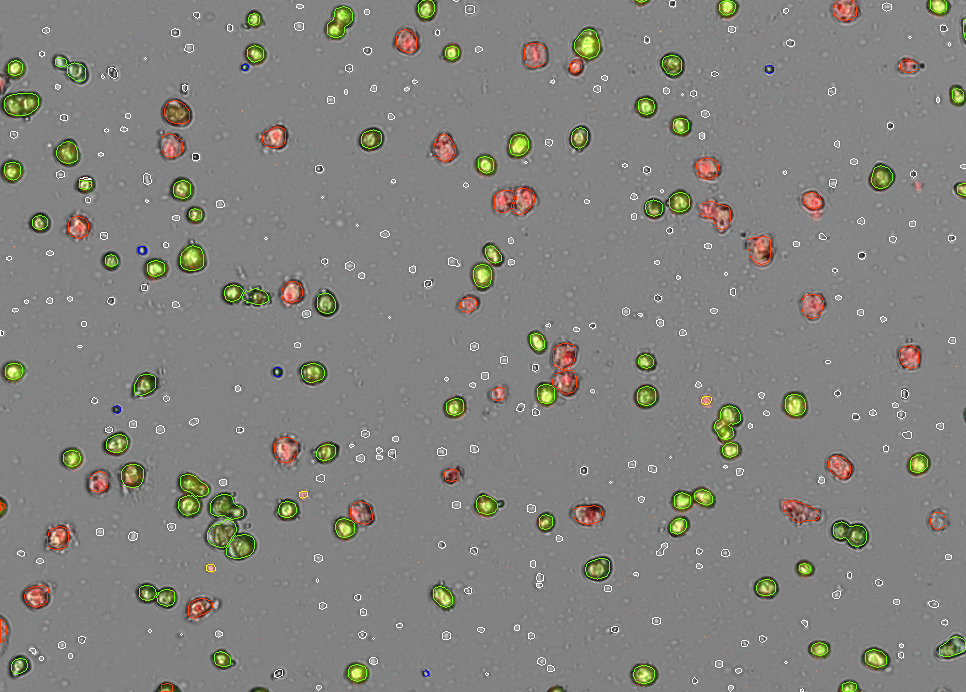Sponsored Content by DeNovix Inc.Reviewed by Louis CastelJul 29 2024
Could you start by giving us an overview of the new CellDrop app and its significance in the realm of hepatocyte analysis?
The Hepatocyte app on the latest version of CellDrop software is the first automated cell counter algorithm designed specifically to count hepatocytes (liver cells). This is also the first cell-counting app from DeNovix developed using machine learning algorithms.
Additionally, it's important to note that the CellDrop doesn't have a consumable such as a disposable slide or catridge. This eliminates a significant cost from cell counting and reduces the amount of plastic being consumed in the lab.
What are the primary challenges in counting hepatocytes automatically, and how does the CellDrop hepatocyte app address these issues?
Counting hepatocytes with automated cell counters presents significant challenges. These cells are not only large and irregularly shaped, but they may also exhibit auto-fluorescence and contain multiple nuclei. Furthermore, hepatocyte samples often include other cell types, such as lymphocytes and erythrocytes, complicating the counting process.
These factors significantly complicate the algorithms used by even the most advanced image-based cell counters, making it difficult to differentiate single cells from clusters or to identify cells of interest amidst debris. With the CellDrop Hepatocyte app, we worked with experts in the field and trained a machine learning algorithm to count hepatocytes the way they would on a microscope using trypan blue.
Then, we added the CellDrop’s dual channel fluorescence capabilities to the algorithm to better distinguish live vs dead and debris vs cells.
How does the CellDrop app’s performance compare with traditional methods of hepatocyte counting in terms of speed, accuracy, and reliability?
The Hepatocyte app’s counting speed is much faster than a human, and the area being counted is about 3.5 times larger than what a manual hemocytometer would count, yielding a larger and, therefore, more representative sample, but I think the main advantage is consistency.
The way I count cells might be slightly different than the way you count cells or even the way I count cells on Friday afternoon might be slightly different than how I would have counted them on Tuesday morning. The Hepatocyte app eliminates all that and standardizes counts between people and labs.

Key: Dead Hepatocytes (circled red), Live Hepatocytes (circled green), Lymphocytes (circled blue), Free Nuclei (circled yellow), Non-Nucleated Cells / Debris (circled gray). Image Credit: DeNovix
Could you discuss the app’s potential applications in drug discovery, toxicology, and virology research and how it might change the landscape in these fields?
Cell counts need to be very accurate and consistent in these workflows where you are using liver models to study the effect of a drug or pathogen. Since hepatocyte cells come directly from a model organism and then are plated and experimentally treated, small variations in the density or viability of the cells between runs can have a statistically significant effect on the result.
This, of course, requires the researchers to collect more data to confirm these differences and slows the whole process down. The standardization the CellDrop Hepatocyte app provides will streamline this process for our customers and produce robust, reproducible data.
What features have been incorporated into the app to ensure ease of use for researchers, and how accessible is it for varying laboratory setups?
The CellDrop has an autofocus capability that will ensure that focal planes are consistent, and the Hepatocyte app has a new auto-thresholding feature for determining live/dead fluorescent thresholds. These tools, along with the machine learning count algorithm, will ensure that hepatocyte counts are fast, easy, and consistent.
CellDrop is accessible to the average cell biology lab budget. We offer a number of different purchase options customers can choose from based on their throughput and the availability of capital purchase funds.
What has been the initial feedback from early users of the app, and how has this influenced any further development?
It was quite exciting and a little stressful the first time I took the Hepatocyte app out in the field for a real beta test. Luckily, we had help from a lot of good scientists refining the algorithm along the way, and the lab was thrilled with the results.
Since then, we have received a lot of positive feedback, which has been incredibly rewarding after the many months spent in development, fine-tuning the software to meet the high expectations of our customers.
As the lead on this project, what has been the most rewarding aspect of developing this app, and what are your aspirations for its impact on the scientific community?
My heart is still in the lab, so I have really enjoyed working closely with hepatocyte researchers and processing/analyzing the samples used in algorithm development.
I also got to do a lot of the hands-on work training the model itself and see it start to deliver solid and consistent results. I see the tremendous potential machine learning algorithms have for scientific research. It has been a pleasure playing a small part in pushing this technology along.
Before I started working at DeNovix, I spent a lot of time in graduate school in labs working as a researcher. Cell counting sounds simple, but everybody does it differently. As people work through complicated workflows, we can confirm that they got their cell count right. Helping people like this is really rewarding to me.
What insights did you gain from developing a product aimed at solving a problem you previously faced as a researcher?
The main takeaway for me was the critical importance of consistency. No matter the method—be it a machine learning algorithm, the initial approach to cell counting, or manual counting—there will invariably be challenges and ambiguities at the fringes. There are always going to be questions and uncertainties in those gray areas.
As long as you are doing things consistently, which is what a cell counter does by definition, I think you can work out everything else about the cell count part of the process.
How has your cell counting technology been received by the scientific community?
Our cell counter showed up on the Lab Rats Reddit recently. Someone had uploaded an image of cells they had counted using our device, recognizable by the software interface. They sought assistance with identifying a problem, and before I could offer my support, ten other individuals had already provided answers. Witnessing the community engagement and seeing our technology in action, functioning well and facilitating discussions, was truly rewarding.
About the speaker

Dan Schieffer joined NanoDrop Technologies Inc. in 2006 while completing his BS in Biotechnology at University of Delaware. After contributing to the development of the NanoDrop 8000 and NanoDrop 2000, Dan accepted a teaching and research assistantship at Villanova University. At Villanova he helped develop a novel flow cytometry-based FRET system to elucidate the role of cell membrane organization in CD4+ T Cell activation. Dan then moved into a research assistantship role at the University of Pennsylvania, where he performed high throughput genetic screens to discover novel immune system pathways that regulate pathogenesis in insect-borne viruses. Dan joined DeNovix in 2013. He has an MS in Immunology from Villanova University.
About DeNovix Inc.
Welcome to DeNovix.
Award-Winning Products for Life Science
Our multi-award winning products include the Reviewers’ Choice Life Science Product of the Year and Platinum Seal awarded- DS-11 Series Spectrophotometer / Fluorometer and CellDrop™ Automated Cell Counter. CellDrop is the first instrument of its kind to Count Cells Without Slides. These powerful instruments integrate patented DeNovix technology with easy-to-use software designed by life scientists for life scientists.
Researchers tell us they love the industry leading performance, smart-phone-like operation, and the flexible connectivity of the instruments. When support is needed, the DeNovix team is here to help. DeNovix received the prestigious Life Sciences Customer Service of the Year based on independent reviews posted by scientists worldwide!
CellDrop: Sustainable Laboratory Product of the Year
The CellDrop Automated Cell Counter has been awarded Sustainable Laboratory Product of the Year in the SelectScience® Scientists’ Choice Awards®!
CellDrop’s patented DirectPipette™ technology distinguishes it as the only cell counter to eliminate the need for cell counting slides. This innovation saves millions of single-use plastic slides from use and disposal each year.